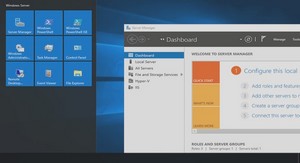AD DS and DNS Namespace Integration
AD DS domain names must use DNS names
You can integrate
an AD DS domain
name with the
external name
space by using:
• The same name space
• A sub domain of the external name space
• A different name space where the
domain and local are different names
What Are Service Locator Records?
SRV resource records allow DNS clients to locate TCP/IP-based Services. SRV resource records are used when:
• A domain controller needs to replicate changes
• A client computer logs on to AD DS
• A user attempts to change his or her password
• An Exchange 2003 server performs a directory lookup
• An administrator modifies AD DS_ldap._tcp.contoso.msft 600 IN SRV 0 100 389 den-dc1.contoso.msft
protocol.service.name TTL class type priority weight port target SRV record syntax:
Example of an SRV record
Demonstration: SRV Resource Records
Registered by AD DS Domain Controllers
In this demonstration, you will see how to view and manage the SRV resource records registered by domain controllers
How Service Resource Locator Records Are Used
1-Locator initiates a call to Net Logon service
2-Net Logon uses the information and queries DNS for SRV resource records
3-Net Logon tests connectivity to target servers
4-Locator collects information about the client
5-Domain controllers respond, indicating that they are operational
6-Net Logon returns the information to clients
What Are AD DS Integrated Zones?
AD DS integrated zones store DNS zone data in the
AD DS database
Benefits of using AD DS integrated zones:
• Replicates DNS zone information using AD DS replication
• Supports multiple master DNS servers
• Enhances security
• Supports record aging and scavenging
What Are Application Partitions in AD DS?
• A DNS zone can be stored in the domain partition or in an application partition
• Administrators can define the replication scope of custom application partitions
• DomainDNSzones and forestDNSzones are default application partitions that store DNS-specific data
The AD DS database is divided into directory partitions, with each directory partition replicated to specific domain controllers


